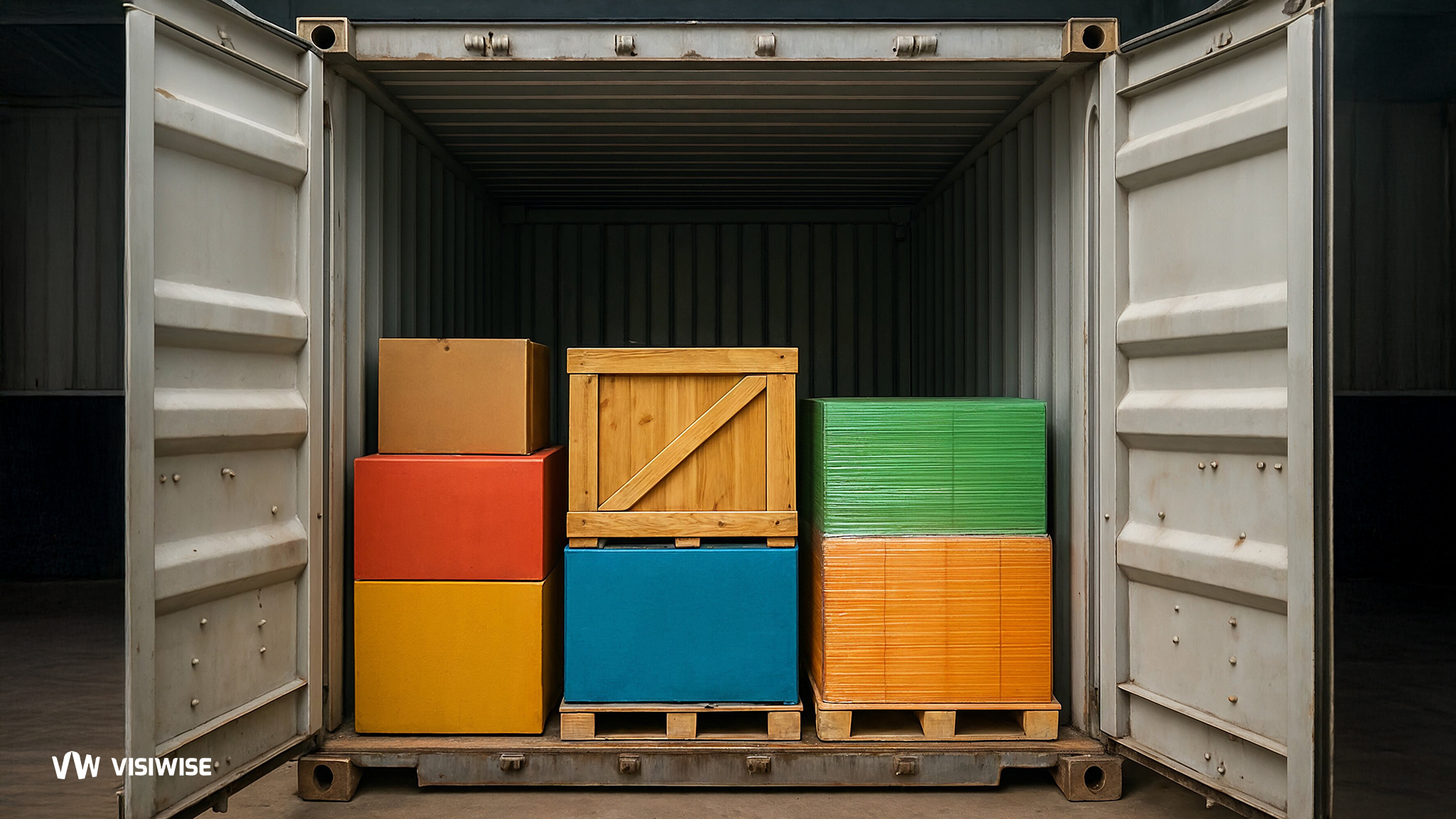Transportation logistics is a vast industry, with marine forwarding comprising the most complex part of it. The complexity of marine transportation mainly lies in a vast number of suppliers, middlemen and logistics agents, all of them offering the same services at different rates. This requires a shipper to have at least some idea about the marine shipping process in order to deal with it.
Booking a full container load (FCL) from freight forwarders is a relatively easy task. However, not all importing businesses have the necessary volume to fill even the smallest 20 ft container with 33 cubic meters of cargo. In order to fulfill the demand for less than a container load (LCL) NVOCC companies are offering LCL transportation along with FCL.
In this article we will go through details of LCL shipment such as how to arrange LCL shipments, cost related for LCL shipments, documents required for LCL shipments and Pros and Corn for LCL shipments.
What is LCL Shipment?
LCL (Less than Container Load) shipment is considered the one of the best ways to ship small volume of the shipment which doesn’t have enough volume to carry in a 20’ or 40’ container. When sales people in freight forwarding meet the prospects this is the one question they will ask to them: “Do you have LCL shipments?” Many companies opt for LCL due to many reasons such as low inventory maintenance, reduced freight cost, and minimized warehouse expenses.
Is LCL Shipping the Right Fit for Your Business?
- LCL shipping will make most sense for your business when you need to transport smaller consignments sooner, rather than waiting for the moment when you’ll be able to fill a whole container. The main benefits of LCL shipping are:
- Move smaller shipments with lower costs
- Avoid high air freight cost per kg
- Reduce your inventory costs
- Find space during peak season
The main difference between LCL and FCL (full container load) shipping is how the container space is used. With LCL shipping, multiple smaller shipments are consolidated in one container, whereas FCL shipments will take up the whole of the container on their own, regardless of when they fill it.
However, there are other differences between LCL and FCL shipping that are worth considering when it comes to deciding which method is the best option for you.
Understanding How LCL Shipping Rates Are Determined
LCL shipping rates are calculated by volume, i.e. the amount of space in cubic meters (CBM) your goods take up. These rates will vary according to demand for container space and the times of year. The more container volume you need for your shipment, the more you will pay.
LCL shipping rates do also take weight into account. However, this typically has far less bearing on the overall cost than volume, simply because container ships can handle huge amounts of weight.
A quote for LCL shipping will generally include the following:
- Pickup: the cost of collecting your shipment from the pickup point, which may be a warehouse, factory or other premises.
- Loading: this may also be labelled as ‘origin’. It covers the loading (or ‘stuffing’) of containers with your and other shipments at a Container Freight Station (CFS). So you then have a consolidated load.
- Shipping: the cost of the sea journey itself, from port of origin to port of destination. This will vary depending on the shipping line used and a number of other factors.
- Deconsolidation: when arriving at the destination country, LCL shipments will stop at another CFS, so the containers can be ‘unstuffed’ or deconsolidated.
- Delivery: the cost of transporting your goods to their final destination, as well as unloading if you will not be doing this yourself.
- Documentation and Customs Clearance: there will also be administration costs associated with the documents and processes for getting your goods through customs.
What to Know About LCL Freight Container Sizes
The containers used for LCL are exactly the same as for FCL. The standard dimensions are 8ft (2.44m) wide by 8.5ft (2.59m) high, with two options for length: 20ft (6.1m) and 40ft (12.2m). As you can imagine, this is so they can all be stacked efficiently and safely in high volume in ports, warehouses and of course on container vessels.
You may not have a choice in the length of container your goods travel in. But if your consignment takes up more space than a 20ft container, then you will obviously share a 40ft container with other shipments.
How Do We Arrange LCL Shipments?
One of the important things related to LCL is understanding the dimension of packages. If you are a customer then it is your responsibility to measure the dimension of packages such as length, width and height. You also need to understand well the net weight and gross weight which are required to calculate cost of the shipment. Below example gives an idea on LCL shipment inquiry:
- Material: Spare parts
- Gross Weight: 500 Kg
- Dimensions: 1 Wooden Crate (Dimension: 515 x 80 x 85 CM)
- Mode of Shipment: LCL
- POL: CFS Mundra
- POD: CFS Shuwaikh
Here we mention details of the product we need to receive from the supplier.
Why Are Dimensions Important in LCL?
Now question: why do you need dimension details to arrange the quote? In LCL shipment the cost of shipment is based on weight or volume of the cargo—whichever one is higher will be applicable. Here, gross weight of the cargo is 500kgs but volume weight is 3.5 Cu. Mtr. (1 cubic meter is 1000Kgs in ocean freight shipment). Volume weight for the shipment is 3.5 CBM, which is higher than 500Kgs, hence volume weight will be applicable here.
Sample Freight Forwarder Terms
Common terms and conditions given by freight forwarder / shipping line on LCL shipment is as follows:
- Ocean freight + Ex-works + D/O charges: KWD 233/- (3.5 CBM)
- Volume (Minimum): 3.5 CBM
- Rate applied: Mentioned Volume. Here volume is 3.5 CBM.
Subject to:
- Rates apply for Non-Hazardous / Non-over dimension & stackable cargo
- Actual weight or volume at the time of pickup
- Dangerous Goods / Hazardous goods should be supported with MSDS / UN no. & Class
- Destination Customs Duty Clearance @ actuals and extra
- Shipper to provide necessary company clearing docs / Ministry approvals for customs clearance
- Insurance not included
- We are not liable for any loss / damage / shortage / demurrage / detention in cargo at any time, whether during transit, loading, offloading or customs inspection
- Shipper / Consignee will be responsible for all Uncleared / abandoned cargo at POL / POD
Destination Charges for LCL Shipments
- Port Automation Charges
- Manifest Automation Charges (MAC)
- Agent Delivery Order Charges
- Handling Charges
- Customs Inspection Charges
- Cargo Fees (Tonnage Dues)
- ECR Charges
- Destuffing Charges
- CFS Charges
Documentation for LCL Shipment
House Bill of Lading (HBL) is the main document concerned with LCL shipments. We are all well aware of Master Bill of Lading (MBL) as it’s the most important document in ocean freight shipment.
A Master Bill of Lading (MBL) is classified as a Bill of Lading issued by a ship owner or operator, known as a carrier. There are large-scale carriers that carry container shipping worldwide such as MSC, Maersk, Hapag-Lloyd, CMA CGM, Evergreen, Cosco, etc. These companies carry out their own shipping activities with their own container ships. If an exporter wishes to transport with one of the specified carriers, it communicates with the carrier company and organizes transportation. After the loading organization, the carrier shows a signed bill of consignment to the exporter when the loaded container leaves the loading port. The carrier takes responsibilities for the Master Bill of Lading, as it is signed by the carrier and printed by the carrier.
Functions of the Bill of Lading
- Evidence of contract between shipper and carrier – Proof that there is an agreement between parties
- A receipt that the goods have been loaded – Usually the ship’s master/captain verifies the receipt and forwards it to the seller’s agent
- Document of title of goods – The Buyer receives the goods by verifying the title of goods at the port
What is a House Bill of Lading (HBL)?
House Bill of Lading (HBL) is a document issued by a freight forwarder or a non-vessel operating company (NVOCC) to a shipper to acknowledge receipt of their items for shipment. In other words, it’s a receipt for the goods.
A house bill of lading is always a receipt for a shipment from one exporter, while a master bill of lading is a receipt that could potentially cover the shipments of many exporters, as they are consolidated by the carrier into a larger shipment.
The house bill of lading also serves as proof that the carrier has a contract to transport the cargo. In the absence of it, the carrier is deemed to be moving it illegally. The contract is between the supplier and the carrier company and not the ship/train/airplane carrying the consignment. If there occurs any problem during the shipment, it is to be solved between the supplier and the carrier company and not the specific ship/train/airplane that was carrying the goods.
Contents of HBL
- The name and address of the supplier (exporter/seller)
- The name and address of the receiver (importer/consignee)
- Information about the items shipped (dimensions, weight, classification, type of container, etc.)
- The value of the items shipped
- Mode of transportation
- Terms of shipment
Difference Between HBL in FCL and LCL
For FCL, the only difference will be that there will be one seller and one buyer from each country coordinating with both the freight forwarders, and they will issue only one house bill of lading against a master bill of lading.
Whereas in LCL, one master bill of lading can have multiple House Bill of Ladings which are issued to multiple suppliers who all are having their goods shipped in the same container. The rest of the process will remain the same.
How to Issue a House Bill of Lading?
A House Bill of Lading can be issued by groupage operators. These operators usually book an FCL with the shipping line and once the cargo is packed and ready to be transported, they issue a House Bill of Lading to their customers and receive a Master Bill of Lading from the shipping line.



